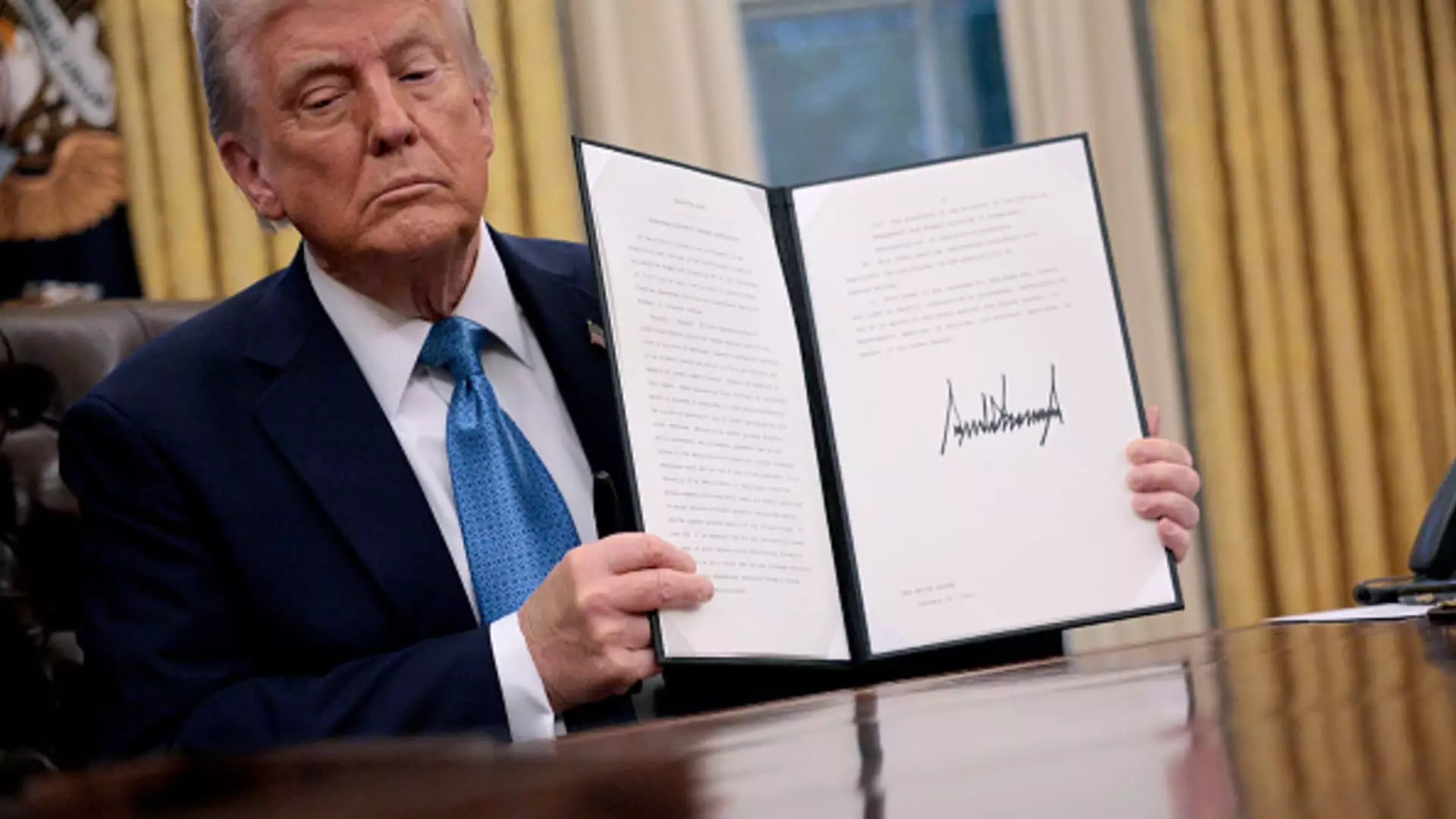The recent imposition of tariffs by President Donald Trump, aimed at countering perceived trade imbalances, is poised to create significant turbulence in the U.S. stock market and across various industries. The auto, industrial, retail, and beverage sectors, which are heavily reliant on international supply chains, are particularly vulnerable to these economic shocks. This article delves deeply into the implications of these tariffs, evaluating the potential ramifications on corporate earnings and broader market sentiment.
The Immediate Reactions on Wall Street
On a tumultuous Monday following the tariff announcements, U.S. equities experienced a sharp decline, reflecting investor anxiety about the future stability of corporate profitability. The immediate impact can already be discerned through the downward pressure exerted on shares in industries that depend heavily on imports. Analysts at Goldman Sachs have forecasted a potential 5% drop in stock values as corporations digest the consequences of increased tariffs. This speculated sell-off underscores the interconnectedness of global trade and domestic market performance.
Auto Industry Under Siege
Perhaps the most affected by these tariffs is the automotive sector, which has a significant presence across North America. Major manufacturers—General Motors, Ford, and Stellantis—face a daunting reality: they may need to reassess their production strategies and supply chains. As tariffs raise operational costs, the necessity for companies to move manufacturing back to U.S. soil could not only disrupt existing supply chains but also lead to inefficiencies. The repercussions could drive up vehicle prices for consumers and stifle purchasing power in an already sensitive market.
In the beverage industry, companies like Constellation Brands, which imports a significant volume of alcohol from Mexico, are already facing investor backlash. As Canada responds to the impending tariffs by potentially pulling American alcohol from its retail shelves, the implications of a trade war are becoming starkly apparent. Increased costs associated with imports could also lead to a ripple effect, pushing prices up for consumers and thereby dampening overall market demand.
The retail sector, especially discount retailers such as Five Below and Dollar General, is bracing for impact as they rely extensively on inexpensive imports. The threat of rising prices on consumer goods not only jeopardizes their profit margins but also shifts the dynamics of consumer behavior. With affordability being a key selling point for these brands, any increase in operational costs may result in a loss of market competitiveness.
Meanwhile, established brands like Nike and Lululemon, with their considerable exposure to imports from China, could face dual challenges: skyrocketing costs and a potential dip in consumer goodwill. The nexus between tariff-induced price increases and consumer sentiment may be pivotal for their sales in the U.S. and beyond.
The implications extend beyond direct manufacturers and retailers; the logistics and transportation sector stands to be significantly impacted as well. Companies such as Union Pacific and Norfolk Southern, which play vital roles in freight movement across the U.S., may experience decreased demand due to hindered supply chains caused by higher tariffs. Such disruptions not only affect profitability but could also lead to operational slowdowns, amplifying the economic fallout.
Furthermore, Trump’s latest tariffs put a spotlight on the “de minimis” trade provision that previously aided small online retailers like Temu and AliExpress. With new regulations potentially eliminating duty-free thresholds for shipments under $800, these businesses may lose a critical competitive advantage. Such changes could stifle their growth and make it more difficult to offer low-priced goods to U.S. consumers.
The future remains uncertain as industries grapple with the immediate and far-reaching effects of these tariff implementations. As President Trump continues to refine his trade policies, stakeholders across all sectors will need to devise strategies to mitigate risks, adjust to evolving consumer behaviors, and navigate an increasingly complex global marketplace. Policymakers must also balance the dual imperatives of protecting domestic interests while fostering a conducive environment for growth in the broader economy. As the situation unfolds, ongoing vigilance will be essential to interpret the long-term consequences of these trade maneuvers.

